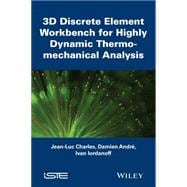Complex behavior models (plasticity, cracks, visco elascticity) face some theoretical difficulties for the determination of the behavior law at the continuous scale. When homogenization fails to give the right behavior law, a solution is to simulate the material at a meso scale in order to simulate directly a set of discrete properties that are responsible of the macroscopic behavior. The discrete element model has been developed for granular material. The proposed set shows how this method is capable to solve the problem of complex behavior that are linked to discrete meso scale effects. The first book solves the local problem, the second one presents a coupling approach to link the structural effects to the local ones, this third book presents the software workbench that includes all the theoretical developments.








